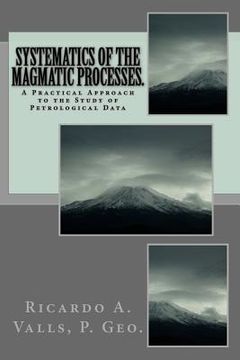Systematics of the Magmatic Processes.: A Practical Approach to the Study of Petrological Data (en Inglés)
Reseña del libro "Systematics of the Magmatic Processes.: A Practical Approach to the Study of Petrological Data (en Inglés)"
Since most the superficial ore deposits have been already discovered, the job of the field geologist becomes more and more complicated with each passing day. We now need to reorient our work to interpret the geochemical, geophysical and other signals related to these blind and/or buried mineralized rocks. In our help come more sophisticated equipment, new powerful software and more rational geological theories, all which demand from us a more complete theoretical formation. On the other pan of the scale, we have graduate and post-graduate students with a solid theoretical background, but with little practical experience. Most of their text books are more concern with theory then with its practical application. Examples in these books are fictitious or at best- simplified. The reason is clear- we need to teach them a "necessary minimum" in the confidence that practice will teach them more latter. Thus, one can ask the following question: Is this an unavoidable gap? My main objective in writing this book has been to put together the theory of the magmatic processes with the practical aspect of how to study these processes. I hope it will be useful not only for the average student in the task of understanding the systematics of the magmatic processes and its relation with modern Plate Tectonics, but -chiefly- for anyone confronted with the problem of processing and studying petrological data. The text has been put together to emphasize the practical part on each chapter. Real examples are processed step-by-step and the proper programs are given to facilitate similar analysis in the future. We start with a description of the main characteristics of the igneous rocks, their modern nomenclature, and the main rock types on each of the four defined groups of Ultramafic, Mafic, Intermediate, and Felsic igneous rocks and their effusive analogues. I will also introduce here the Igneous Rock Identifier(TM), and explain how to use it. Chapter two will be dedicated to the field study of the igneous rocks. Here I will talk about the most common textures and the sequence of field studies of the igneous rocks, and some recommendations on how to name igneous rocks in the field. After a brief introduction to the systematics of the magmatic processes in Chapter 3, we will deal with the quality requirements of the analysis and the pre-elaboration of the data in Chapter 4. Of a cardinal importance is Chapter 5, where you will learn how to determine the degree of incompatibility of the trace elements, and I will introduce a model for the determination of the most probable magmatic process. The answer to this problem has not only a theoretical value, but also a very practical one, as it is discussed here. Chapters 6 to 8 are dedicated to more detailed studies of the partial melting, fractional crystallization, mixing and contamination processes. So, they maybe of more interest to researchers and students then to field geologists. However, field geologist ARE invited to test these models also. A sequence of procedures for the petrological evaluation of a suite of magmatic rocks is explained in Chapter 9, based on real case studies. This includes the use of geochemical data in the interpretation of tectonic events. Because of its practical approach, this chapter will be of more interest to field geologists... However, students and researchers ARE invited to test them also. There is an old Spanish proverb: "jack of all trades, master of none or the Polish version- he that too much embraceth, holds little". Clearly I cannot hope to cover all the problems of the systematics of the magmatic processes. Consequently, I have tended to focus on filling the gap between the theoretical knowledge and their practical application.

